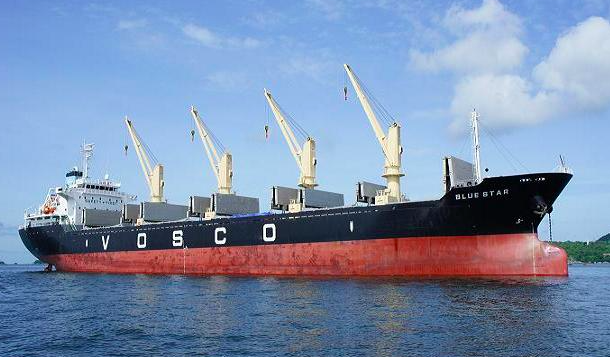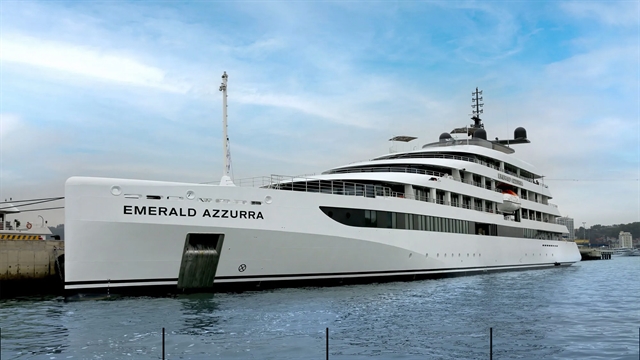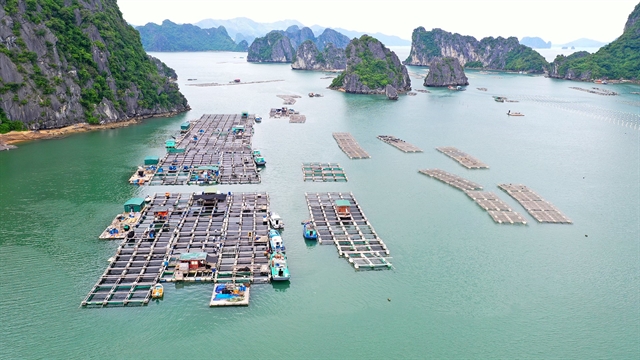 Economy
Economy

The northern province of Quảng Ninh has set an objective to become Việt Nam's leading ocean-economic hub in the future, according to a report on the province's strategic development released by the local authority.
QUẢNG NINH — The northern province of Quảng Ninh has set an objective to become Việt Nam's leading ocean-economic hub in the future, according to a report on the province's strategic development released by the local authority.
Among Việt Nam's numerous coastal provinces, Quảng Ninh possesses the most dynamic mix of elements that have the potential to turn it into a key player in transportation, ship-building, tourism and aquaculture.
Transportation
Close proximity to Việt Nam's northern port city of Hải Phòng allowed the province to take advantage of its major sea routes, modern port and road infrastructure. Cái Lân International Container Terminal Limited Liability Company (CICT), the province's largest port, has been upgraded to receive large ships, including some of MAERSK's container ships. Since the beginning of last year, the port has been operating four large container ships to transport goods to the EU and the US.
Meanwhile, the province has been in talks with prospective investors to expand the deep-water Con Ong Hòn Nét Port Project located in Cẩm Phả City. Other infrastructure upgrades included the Vân Đồn-Móng Cái Highway, the Hạ Long-Cẩm Phả Highway and the Quảng Yên-Đông Triều Highway to support the establishment of the Coastal Economic Zone Quảng Yên, approved by the Prime Minister’s Office in September 2020, which will serve as a major economic and development driver for the province in the future.
Nguyễn Tường Văn, Chairman of the province’s People Committee, said Quảng Ninh’s strategic development focus was on “turning the province into the country’s leading coastal economic hub, the gateway to the Red River Delta and a major tourism centre with connections to regional and international popular tourism spots by sea."
Văn said the province encourages investors from the private sector in building coastal economic and commercial zones and will be working closely with them every step of the way.
Shipbuilding and tourism

|
| The Emerald Azzurra, the first cruiser ship constructed by the Ha Long Shipbuilding Company. VNA/VNS File Photo |
In February 2022, Ha Long Shipbuilding Company delivered Emerald Azzurra, a US$30-million cruise ship with a capacity of 100 guests, the first cruise ship built by the company. The luxurious cruiser, equipped with top-of-the-line amenities, is part of Scenic Group, an Australian-based cruise line company.
In addition, the shipyard said it has secured contracts and promised on-time deliveries to a number of Việt Nam's cruise operators by the end of 2023, just in time for a reboot of tourism activities in Hạ Long Bay, a UNESCO World Natural Heritage site, after the COVID-19 pandemic.
The province, a popular tourism destination among both international and domestic travellers, has set a target to welcome 11 million visitors in 2022. In order to accommodate a large number of visitors, the province has started the construction of the Vạn Ninh Port Complex in Móng Cái City and upgrades to the Tuần Châu International Port and the Hạ Long International Port.
Aquaculture

|
| Ocean farming at UNESCO World Natural Heritage Hạ Long Bay in Quảng Ninh Province. VNA/VNS File Photo |
Quảng Ninh, traditionally a large aquaculture production centre in Northern Việt Nam, is to stay committed to the expansion and modernisation of its aquaculture.
According to the province’s agriculture and rural development department, the province has been working on the establishment of centralised and high-tech production centres with a focus on creating added value to the supply chain.
There was over 32,000 ha of aquaculture surface in the province by the end of September, a 50 per cent increase from the same period last year. Of which, over 14,500 ha was dedicated to fish farming and more than 2,200 ha to ocean farming. The province has also expanded its facilities to self-supply 44 per cent of its demand for egg and fry.
Quảng Ninh has set a target to expand the ocean farming surface to 8,800 ha by the end of 2025 and increase its production to account for nearly two-thirds of the province’s fish production or 60,000 tonnes. In addition, the province was to maintain an 8 per cent annual growth rate for its aquaculture sector with 100 per cent of fish production meeting all requirements set out in the country’s Law on Aquaculture Production.
In order to reduce dependency, the province aimed to improve the locally sourced supply of egg and fry to meet 70 per cent of demand while heavily investing in high-quality and high-value production including seaweed and lobster. Quảng Ninh also plans to build the country’s first ocean farming and tourism operations to help supplement fishermen’s income.
The key to the successful and sustainable development of the province’s aquaculture sector was production centralisation, implementation of science and technology, product planning, brand-building and adding value, according to the department. The objective is to create strong aqua product brands that meet international standards and product origin regulations in markets including the EU, Japan and China.
In addition, Quảng Ninh trade representatives have been exploring possibilities in potential markets such as the Middle East, Africa and Latin America.
Việt Nam's domestic consumers are another major focus for the province as the country’s middle class has been expanding rapidly in the last two decades. The province has set up multiple trade promotion centres from North to South to improve trade links with other cities and provinces, finding new customers for its aqua products.
The department said the long-term plan is to build a complete supply chain within the province with centralised aquaculture production as the backbone while processing and supporting industries provide added value and input material. Meanwhile, local authorities are charged with trade promotion activities, quality control and enforcement of product origin rules. — VNS